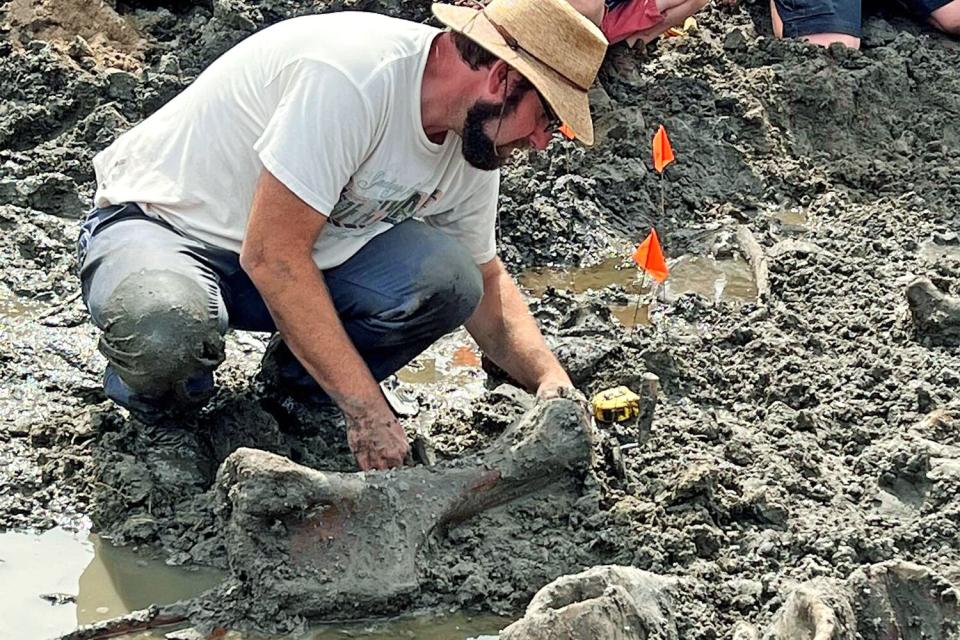Construction Crews Discover 12,000-Year-Old Mastodon Skeleton in Michigan: 'Just Blew Us Away'

Grand Rapids Public Museum Dr. Cory Redman of the Grand Rapids Public Museum looks through bones at the site
A surprise of massive proportions awaited a team of construction workers in Michigan last week.
The crews uncovered a mastodon skeleton during a road construction project in Kent County on Thursday afternoon, per MLive.com, after an excavator operator noticed something red in the soil.
"You go out there to put a pipe in the ground and you find this," Kent County Drain Commissioner Ken Yonker told the outlet. "To find a mastodon, that just blew us away."
"That was just really cool," he added.
RELATED: Researchers Identify Dinosaur Species 5 Times Larger Than Tyrannosaurus: 'This Is Very Exciting'
The construction project, meant to replace a culvert, is now on hold as researchers look through the site for additional pieces of the skeleton, MLive.com reported.
"We're looking back at the past of our existence and, and where we are, and it's just, it just kind of puts a little perspective on where we are, who we are on this earth," Yonker told ABC affiliate WZZM.
Never miss a story — sign up for PEOPLE's free daily newsletter to stay up-to-date on the best of what PEOPLE has to offer, from juicy celebrity news to compelling human interest stories.
Grand Rapids Public Museum (GRPM) will be receiving the mastodon, and shared images of volunteers and experts excavating the bones from the ground on Friday.
An update posted to GRPM's Facebook page on Monday showed one of the bones that had already arrived at the museum.
RELATED: 'Beautiful' Dinosaur Embryo Found Inside Fossilized Egg: 'We Were Surprised,' Says Scientist
"Right now, all of the bones have been excavated and are starting to be cleaned and slowly dried out," Dr. Cory Redman, Science Curator at the GRPM, told PEOPLE in a statement. "The Museum is working with our partners at the University of Michigan's Museum of Paleontology, to begin studying and conserving the bones, so they can be displayed in the future."
"This process will take about a year and a half," he added. "From what we can tell so far, the skeleton appears to be ~60 percent complete and belongs to a single, juvenile mastodon and would have died over 11,700 years ago."
According to MLive.com, crews have filled over 100 bags with bones from the site, but they have not yet found the animal's skull.
"Very rarely do you find a complete skeleton especially of a large vertebrate like this," University of Michigan research specialist Scott Beld told the outlet. "We didn't find the skull or any of the tusks, unfortunately, but we found a lot of other really great stuff."
RELATED VIDEO: Teacher Creates Detailed Dinosaur Drawings
Mastodons lived in North America and are often confused with the Woolly Mammoth, according to the New York State Museum. Both animals resemble hairy elephants, but mastodons are generally smaller in size and have a different curve to their tusks.
The museum said it is thought both animals went extinct 10,000 years ago due to environmental stress and low birthrate. They also may have been hunted to extinction by American Indians.

 Yahoo Finance
Yahoo Finance 